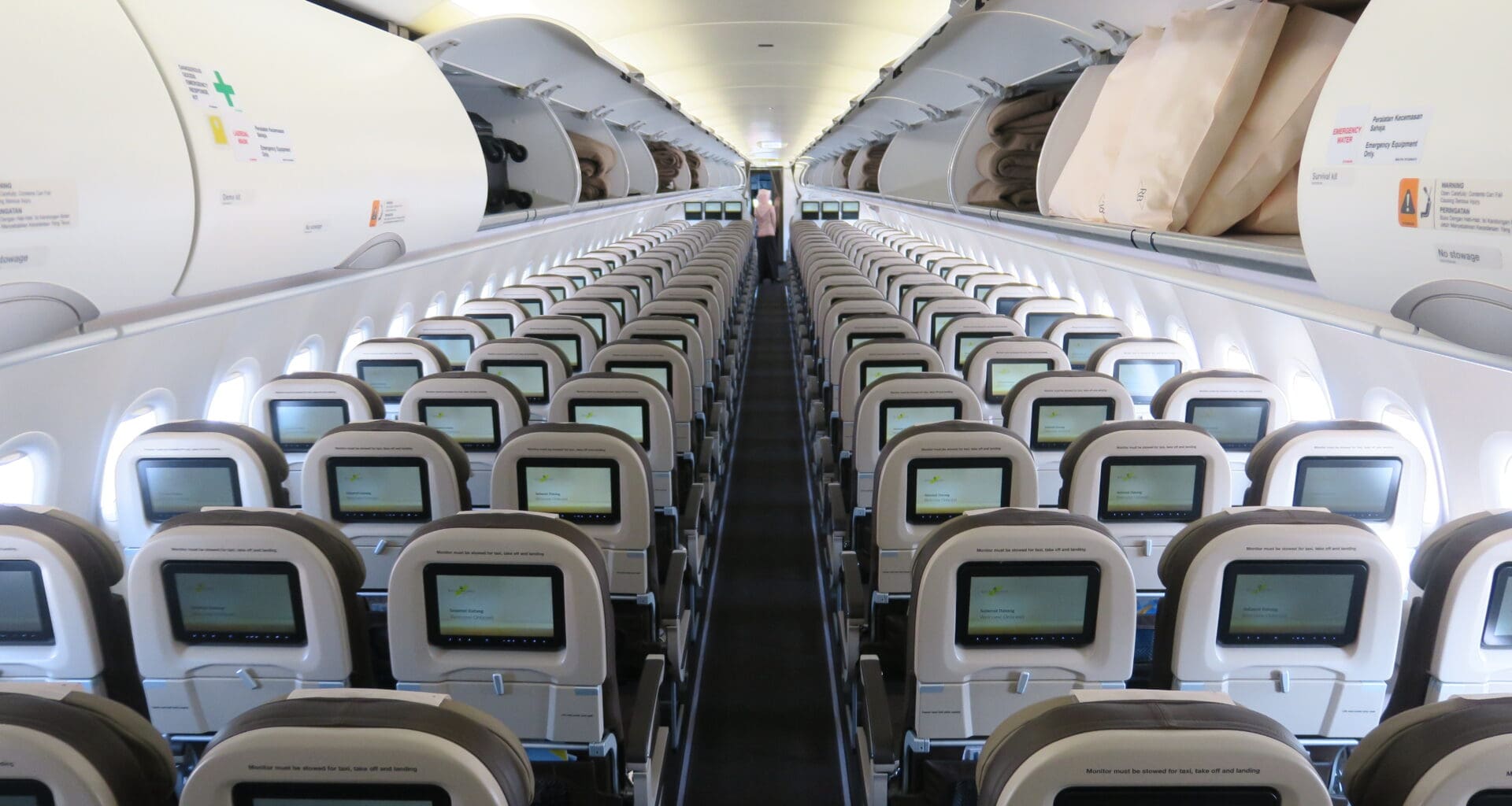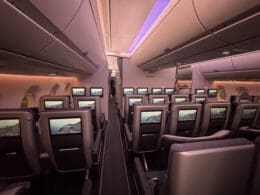One of the things that we stress at The Alviator is that miles and points shouldn’t be treated as “free”. Points have inherent value for a couple of reasons: there’s an inherent opportunity cost to using the point as you could’ve been able to use it for something else in the future, and there was most likely a cost to you acquiring the point, whether it be through spending, a sign-up bonus, or otherwise.
Many loyalty schemes will operate a “pay with points” scheme, which is when you’ll be able to use an assigned value of the point to redeem for cash, perhaps in the form of a ticket. You’re sometimes able to use it for other things as well, though in this case we’ll talk about flight tickets, as you’ll generally get a higher return on investment per point this way.
In this post I’ll talk about the types of “pay with points” schemes available, as well as how you can tell whether a flight is a good deal. This post is written as part of a series I’m writing with Singaporean open-loop loyalty programme HeyMax, which has their own pay-with-points scheme, FlyAnywhere.
What is a “pay with points” scheme?
“Pay with points” schemes allow you to pay for the cash price a flight ticket using your points at a certain cash-per-mile, as opposed to using cash outright. This is different from redeeming award space for a flight.
For example, let’s say I wanted to fly from Singapore to Perth in November. I can either pay 65,000 miles (I can actually pay 45,000 miles if I found Saver award space, though I couldn’t for this dummy booking). This would have been on the “redemption” page on Singapore Airlines’ website.

However, I can also book the flight with cash, then select to pay with my KrisFlyer miles. In this case, I would’ve gotten a flat rate of S$1 back per 100 miles (I didn’t have enough miles in my account to show you the full spectrum). This would’ve cost a total of 224,350 miles if I used the “Pay with Miles” section.
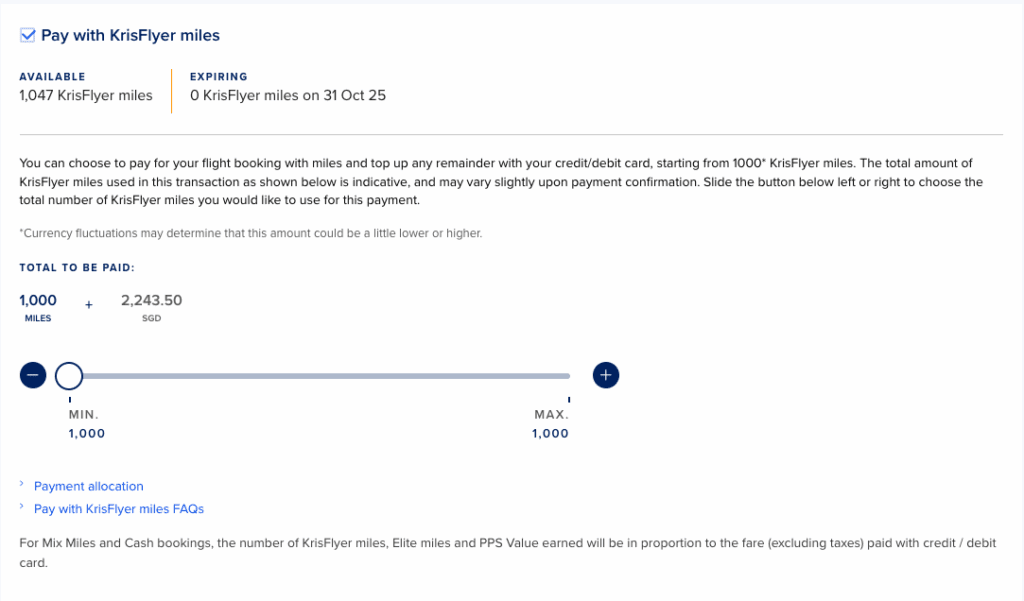
Obviously in this case, “Pay with miles” is a terrible deal, given that I’m spending 3.5x more miles on the same flight. However, the “Pay with miles” option isn’t award space dependent, which means that you can fly any flight you want with the airline, and use miles to pay for your travel. Other airlines that use a “Pay with miles” option will have a similar concept with a similar rate discrepancy.
There are a few different stakeholders that will have a pay-with-points scheme:
- Airlines will have a “pay with points” scheme, where you’d be able to pay with points directly with the airline (like Singapore Airlines) – these will let you book with the redemption programme’s “parent” airline only
- Third-party sites may offer the option to pay with points – for example, HeyMax’s FlyAnywhere programme is one of these programmes, where you can redeem points for travel on any airline
- Credit cards will also have options to pay with points, and you might get a better rate if you have a paid card (e.g. you can pay with points by booking flights directly on AmEx for 0.45p per point here in the UK, though Platinum cardholders might have preferential rates) – these will also let you redeem points for travel on any airline
Generally, redeeming for award space will represent a better deal
I’ve just shared an example where a pay-with-points scheme would be the less valuable way to use your miles. This is often going to be the case. Generally, I would say that pay-with-points schemes are only valuable in a few situations, and wouldn’t generally recommend doing it.
Airlines generally release reward seats to retain customers for their loyalty programme, and fill low-season seats. Generally, they aren’t incentivised to provide valuable redemption opportunities outside of the reward seats that they release.
However, that’s not universally the case. For example, in 2023, I used Singapore Airlines’ “Pay with points” scheme to pay for my flight from Barcelona to Milan, which otherwise offers zero award space. Instead of paying €342 (£298/HK$3,091), I paid 35,700 KrisFlyer miles plus €98.85 (£86.26/HK$893) in taxes, which was also so I could use some KrisFlyer miles that were expiring at the end of that year.
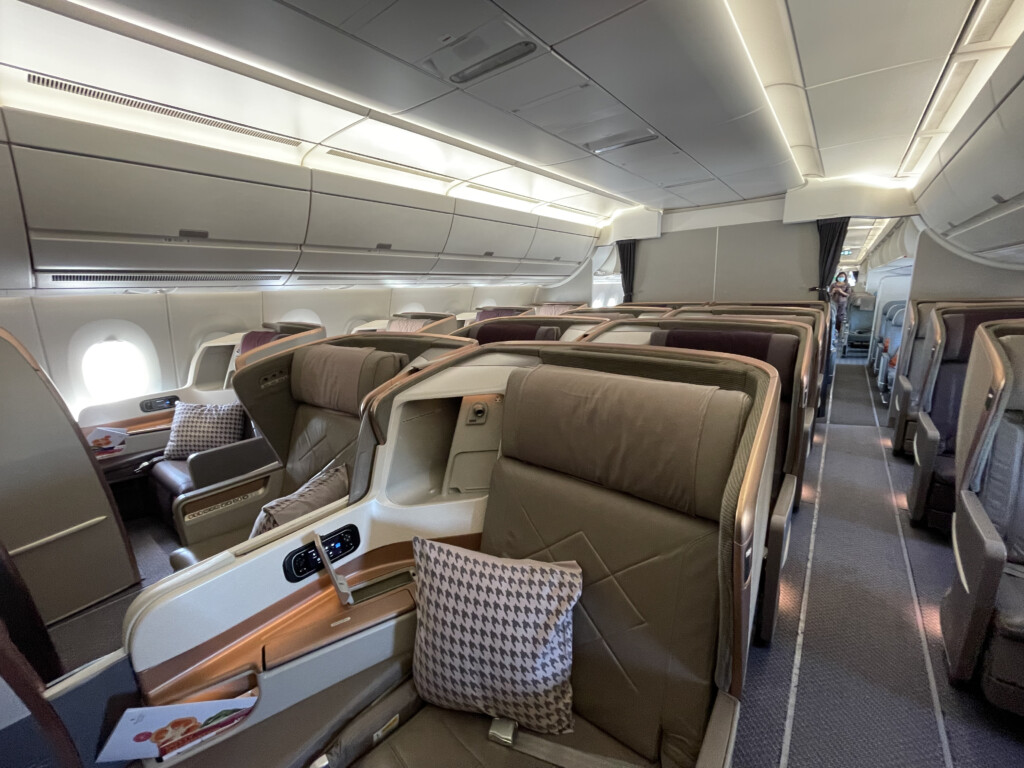
I flew Singapore Airlines from Barcelona to Milan using Pay with Miles, which was a good option in my specific case
In this guide, I’m going to talk about what I consider when I use pay with points programmes, such as KrisFlyer’s “Pay with miles” or HeyMax’s FlyAnywhere programme.
Tip #1: Determine how much you value a point
My first tip to make sure you know how much you value a point. While I don’t think you must know exactly how much each of your points are worth, here are a few considerations I’d think about before using a Pay with miles programme:
- How easy is it to accrue a mile (is your mileage accrual optimised based on your daily spending?)
- How often do you spend miles? (do you only have the PTO to travel twice a year? Or do you do frequent weekend trips?)
- Whether the miles expire, and whether you’d have opportunities to use them before they do
Sometimes, it is genuinely plausible that you’ll have a better mileage strategy than you do regular financial management. In 2023, I was graduating from college and didn’t have a proper income source, and had very limited amounts of time to travel outside of summer (where I’d already made plans), so I genuinely would’ve been a position to spend 35,700 miles over £200 even if they weren’t expiring. Now that I have a proper savings account and travel more regularly, I wouldn’t have made the same decision.
Have a think about how much you value your miles, and whether your miles will be easily “replenished” with your everyday spending.
Tip #2: Know the ins and outs of airfare, including cheap origin airports
As pay-with-points schemes always scale with revenue, the same rules apply to pay-with-points schemes as with cheap airline pricing. Generally, you’ll want to look at which origin airports in your region you can position to and fly out of, in order to make the most of cheap pay-with-points redemptions.
For example, yesterday I shared a flight from Incheon to London via Beijing that was charging £727 one-way in business class (£694 was an OTA price, though China Southern’s own website was charging £727).
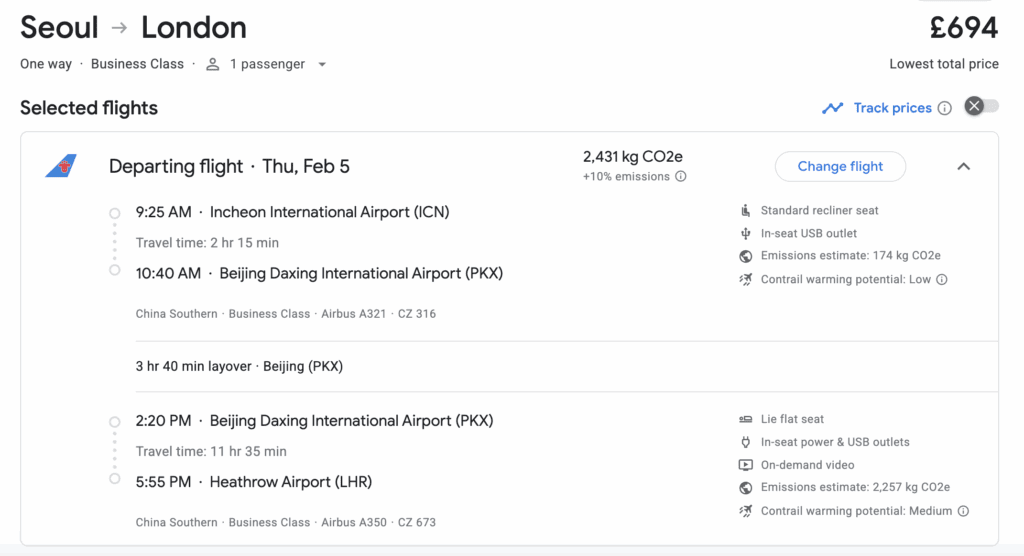
HeyMax’s FlyAnywhere programme allows you to redeem 1 Max Mile for every 0.018 SGD on any flight. This flight would’ve cost 1,257 SGD, so FlyAnywhere would’ve charged me 69,833 Max Miles in order to fly this flight one-way.
If I had booked a flight directly out of Beijing, this would’ve cost £2,780, or 267,055 Max Miles. No thanks.

With programmes such as HeyMax’s FlyAnywhere, you can even use miles to pay for the low-cost airline segment that you’d use to position to a cheaper origin airport. For example, if I wanted to fly Scoot’s ScootPlus from Singapore to Incheon, I could do so for £244, or 23,444 Max Miles as per the conversion rate.

That would bring my total itinerary cost to 93,277 Max Miles, and this wouldn’t be contingent on award space – I’d be able to fly any day this fare was available (and availability for the Incheon-London fare on China Southern is wide open).
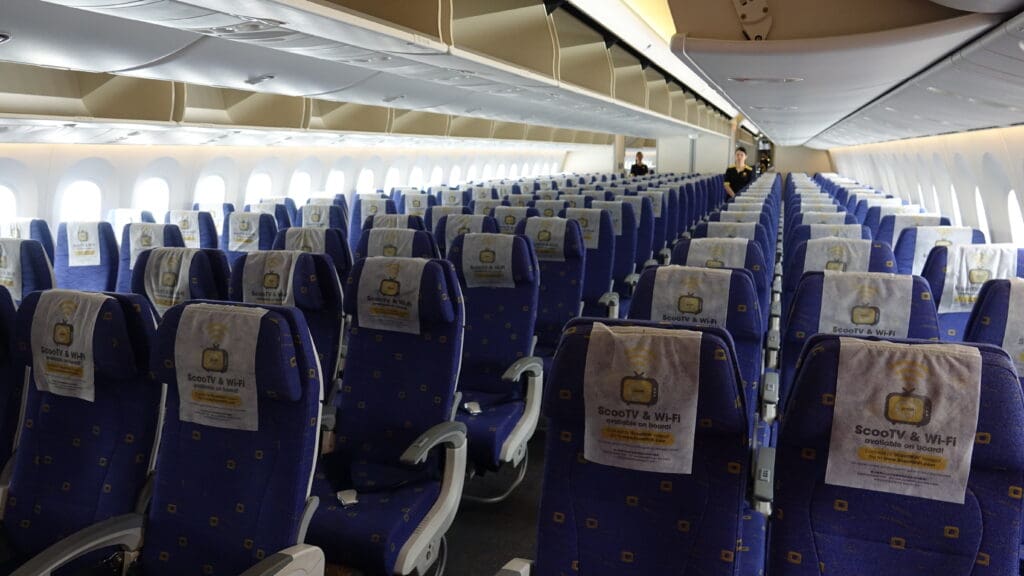
Pay-with-points programmes might make a lot of sense when booking economy, especially when you have a healthy accrual strategy
Tip #3: Know how much a redemption would cost for that cabin class on a similar route
Another tip I’d have is to think about how much a redemption would cost for a similar route in a similar cabin class. Generally, you want to make sure that your “pay with points” redemption is in the same ballpark of miles that you otherwise would’ve spent if you were redeeming directly for award space.
For the above example, Flying Blue doesn’t show any award space on the Beijing to London route. However, 69,833 miles is lower than the 75,000 AAdvantage miles you’d need to fly between Asia and London, or even under what equivalent flights would charge when redeeming an award seat.
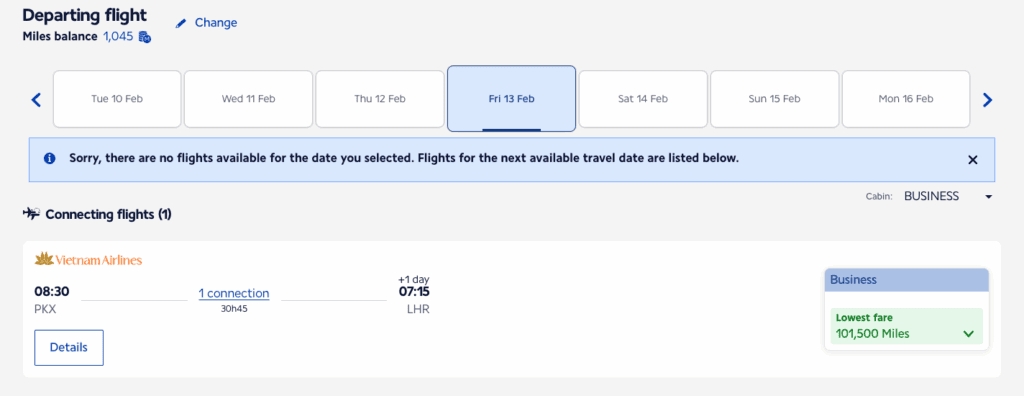
In order to see whether the route you’re redeeming for is a good value, I’d familiarise myself with how much a one-way redemption would cost on a similar route. For example, for a one-way between Europe and Asia, I’d say that the ballpark is around:
- 30,000-40,000 miles in economy
- 45,000-60,000 miles in premium economy
- 65,000-100,000 miles in business class
- 110,000-150,000 miles in first class
If your mileage redemption is above this range, you might want to have a think about why you’re spending miles instead of just paying cash, or whether there’s a better alternative.
Tip #4: Know which routes are least likely to offer award space
Generally, I would recommend using a pay-with-points scheme if finding award space on a certain route and aircraft was very unlikely, and I managed to find a cash deal on it that I didn’t want to pay for outright.
There are lots of routes that could fall into this category, though here are a few suggestions:
- Anything related to low-cost airlines or discounted economy class – if you have regular points accrual or a good number of points, you might want to spend some of these on low-cost airlines, especially if you are already past your points goals for premium travel
- There are some fifth-freedom flights where award space might just never open up – for example, I’ve never seen award space for any of Ethiopian’s intra-Europe fifth-freedom flights, Singapore Airlines’ fifth-freedom flight between Barcelona and Milan, etc.
- Some airlines are notorious for not releasing award space, such as Qantas, ANA on their new 777s, Chinese airlines in premium economy, etc. You might also want to look out for pay-with-points options if you’re travelling during peak season
If the maths added up where I’d be using a similar number of points to the ballparks mentioned above, I’d consider using pay-with-points schemes.
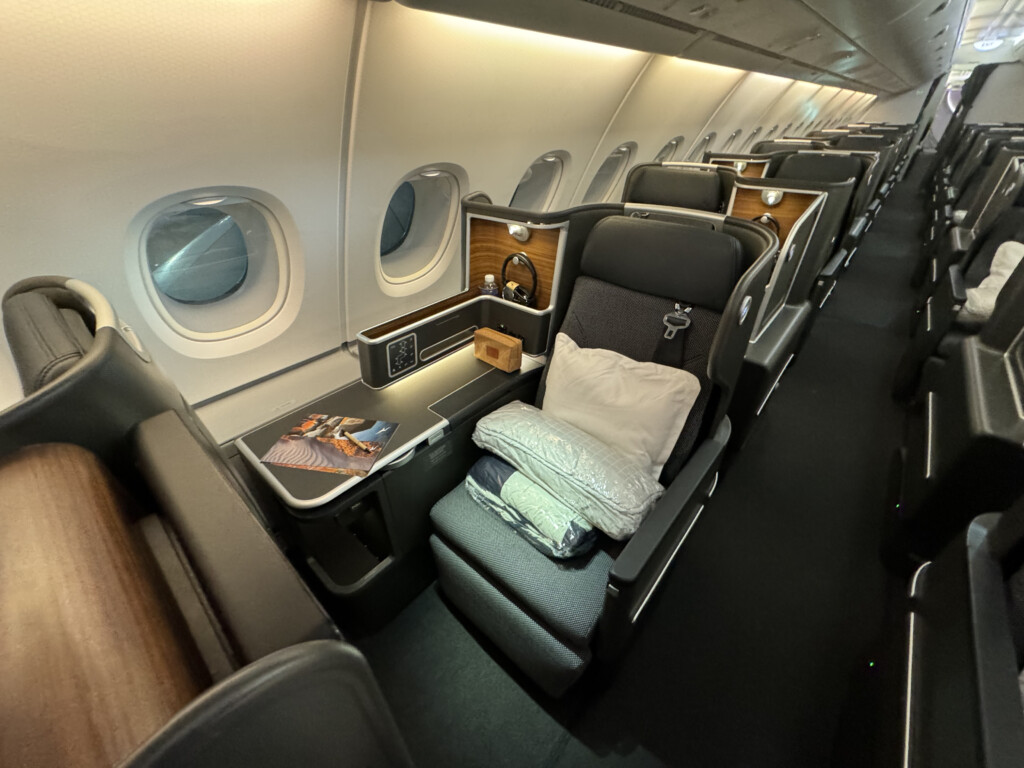
Qantas award space is considered in the industry as a “unicorn” award, as it’s so hard to find
Conclusion
Pay-with-points schemes aren’t my default choice when I’m trying to book an airline ticket, though they can represent good value, especially if I have a healthy accrual strategy and can find cash fare deals that translate well to the pay-with-points scheme. Generally, I’d recommend having a good idea of how much you value your points (based not just on the opportunity cost, but also on your accrual rates), and measuring the redemption cost against the ballpark of how much a reward seat on a similar route might cost.
Download the HeyMax app on iOS or Android, or sign up here





